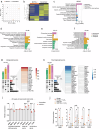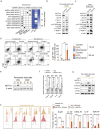Mitochondrial-encoded peptide MOTS-c prevents pancreatic islet cell senescence to delay diabetes
- PMID: 40855115
- PMCID: PMC12411631
- DOI: 10.1038/s12276-025-01521-1
Mitochondrial-encoded peptide MOTS-c prevents pancreatic islet cell senescence to delay diabetes
Abstract
Mitochondria are crucial for cell survival and function, partly through peptides encoded by the mitochondrial genome. Although mitochondrial dysfunction is a hallmark of age-related diseases and senescence, the role of mitochondrial-genome-encoded peptides in pancreatic β-cell senescence during type 1 and type 2 diabetes pathogenesis is largely unexplored. Here we show that MOTS-c levels decrease with aging and senescence in pancreatic islet cells. Treating aged C57BL/6 mouse pancreatic islets with MOTS-c reduced pancreatic islet senescence by modulating nuclear gene expression and metabolites involved in β-cell senescence. MOTS-c treatment improved pancreatic islet senescence and glucose intolerance in S961-treated C57BL/6 and in nonobese diabetic mice. In humans, circulating MOTS-c levels are lower in type 2 diabetes patients compared with healthy controls. Our findings suggest that mitochondrial-encoded MOTS-c regulate pancreatic islet cell senescence and that MOTS-c could act as a senotherapeutic agent to prevent pancreatic islet cell senescence and diabetes progression.
© 2025. The Author(s).
Conflict of interest statement
Competing interests: The authors declare no competing interests.
Figures






References
-
- Thompson, P. J. et al. Targeted elimination of senescent beta cells prevents type 1 diabetes. Cell Metab.29, 1045–e1010.1060 (2019). - PubMed
MeSH terms
Substances
Grants and funding
LinkOut - more resources
Full Text Sources
Medical

